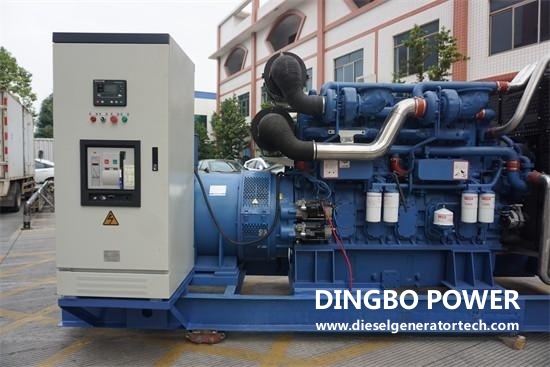The generator set mechanical timing regulating mechanism (MVT device) is used to control the engine exhaust pollution. It changes the injection timing according to the engine load, so as to achieve the purpose of controlling exhaust pollution. Injection timing is achieved by changing the position of the injector follower arm on the camshaft.

The actuator of the mechanical timing adjustment mechanism is a pneumatic cylinder that controls the movement of the fuel injector with the boom. A gear rod on the actuator shaft engages with the gear on the follower arm shaft. When the actuator plunger goes up or down, the actuator shaft turns the follower arm shaft through gears. An eccentric bushing is installed between the follower rocker arm and the injector follower, and the follower arm is fastened on the follower arm shaft with fastening screws. The rotation of the follower arm shaft changes the position of the follower arm on the camshaft, thus changing the injection timing.
The solenoid valve installed on the actuator controls the inlet and outlet of compressed air. The circuit switch turns on or off the solenoid valve according to the change of fuel pressure or engine load. The air that drives the actuator is supplied from the vehicle's air reservoir. When the diesel engine starts, the vehicle air system pressure is lower than 551kPa, and the actuator spring keeps the plunger at a lower position. At this time, the injection timing lags behind. When the vehicle air system pressure exceeds 551kPa, the air pressure pushes the plunger upward, so the injection timing is advanced, and the air pressure keeps the plunger at a higher position (the injection is advanced) until the rated load of the diesel engine of the generator set is 25%. Once it reaches about 25% of the rated load, the electric control pressure switch will close the solenoid valve. Once the solenoid valve is closed, the air source of the actuator is cut off, the air acting on the plunger becomes less than 551kPa, and the spring pushes the plunger downward, delaying fuel injection. From 25% to full load, the diesel engine runs at a small injection angle.
NTC diesel engine with mechanical timing adjustment structure has made some changes in design, and the three cam follower boom covers are connected together with spline couplings. The three follower boom covers must be assembled into one assembly, which uses one gasket instead of three gaskets separately. When using the mechanical timing adjustment structure, special camshafts shall be used. The adjustment sleeve on the actuator shall be used to adjust the injection timing, instead of adding or subtracting the follower boom cover gasket.
Finally, Dingbo power generation equipment reminds users that it is not allowed to try to adjust the mechanical timing adjustment mechanism to increase the continuous operation of engine fuel injection in advance. This will not increase engine power, but will increase engine emissions. When the engine runs continuously at a speed above 25% of the rated speed, increasing the injection advance will cause excessive stress and damage the engine.
As a professional diesel generator manufacturer, we always insist on using first-class talents to build a first-class enterprise, create first-class products, create first-class services, and strive to build a first-class domestic enterprise. If you would like to get more information welcome to contact us via [email protected].
Copyright © Guangxi Dingbo Generator Set Manufacturing Co., Ltd. All Rights Reserved | Sitemap
Update cookies preferences